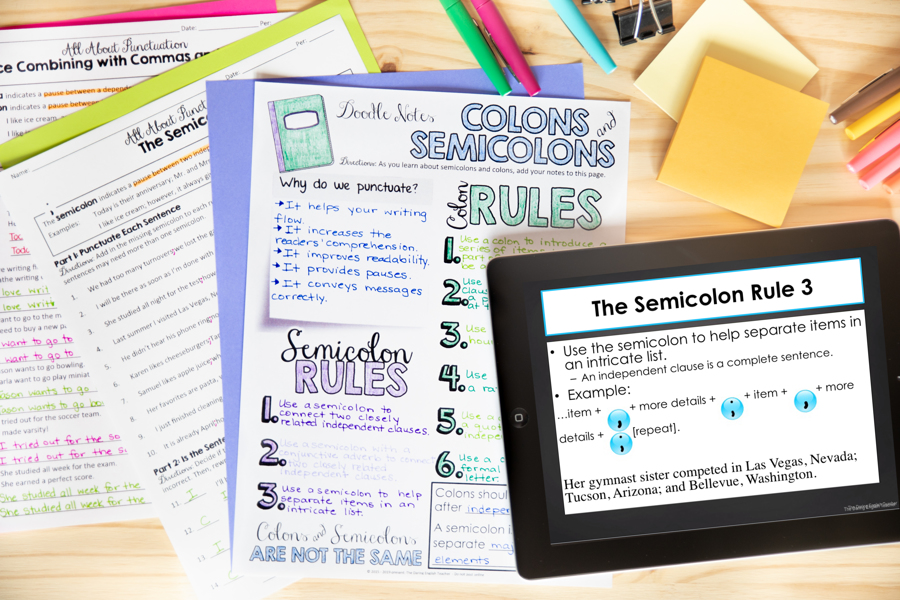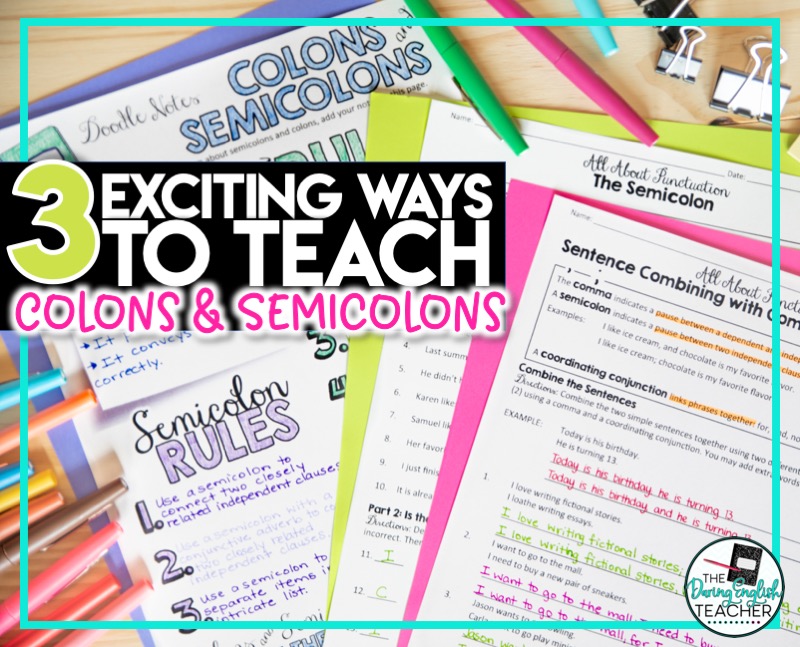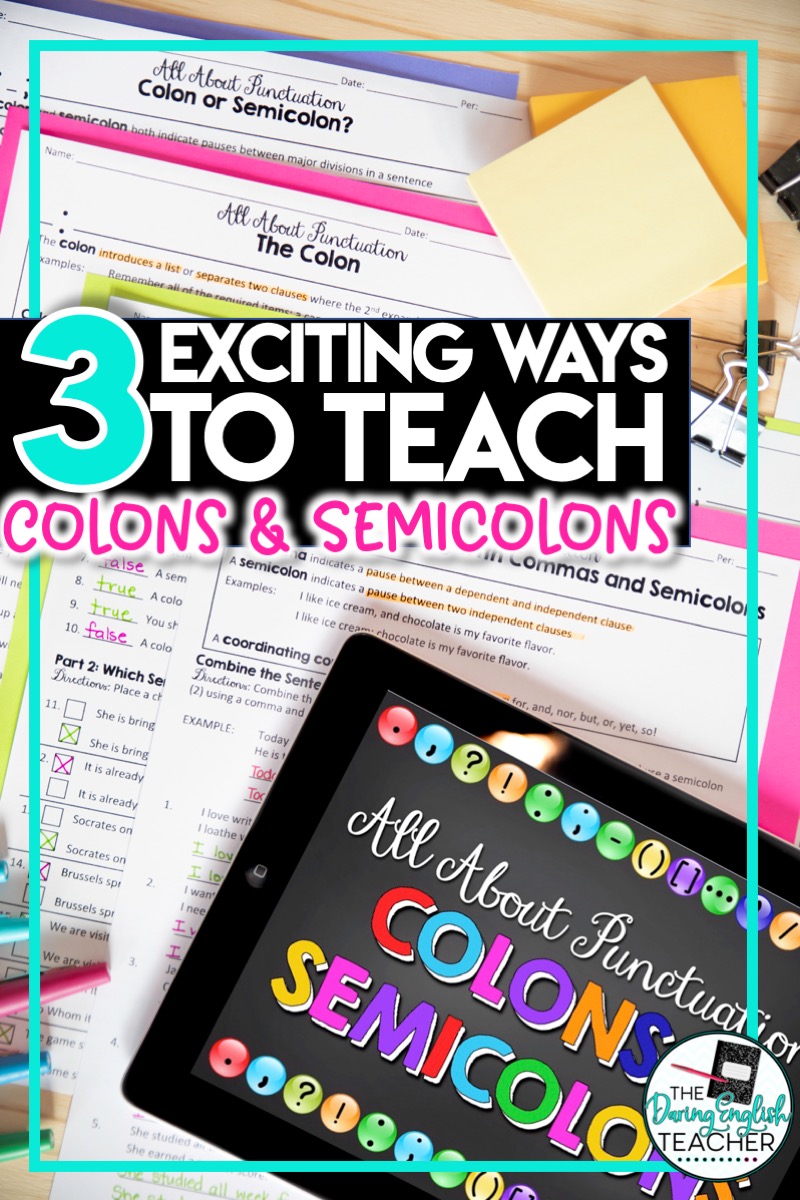When it comes to teaching writing, sentence structure, and punctuation, students struggle with understanding how to use colons and semicolons properly. Like anything else, learning how to use semicolons and colons properly comes with time and practice.
The first step in teaching students how to use colons and semicolons includes direct instruction. Teachers need to show students each punctuation, explain the rules for each punctuation, and give students time to practice this. For semicolon and colon instruction, I use my print and digital Colon and Semicolon Punctuation Teaching Unit which includes a presentation for direct instruction and student resources.
After I use direct instruction to teach my students about the colon and semicolon, I like to use these three strategies to reinforce student understanding. You can also check out this blog post on teaching confusing punctuation.
 |
1. Punctuation in Class Novels
When we are reading a class novel, I like to point out the author’s punctuation usage. Yes, I admit it. I am a total geek when it comes to this. I’ll be mid-paragraph in the middle of a book, and I’ll say, “Hey! Class! Look at this. Look at Golding’s use of the semicolon here.”
Sometimes I will point out punctuation usage as we read. However, it is also beneficial to plan this out. As you read the novel with your students, bookmark specific passages and come back to them so that you are not constantly interrupting the novel.
2. Using Mentor Sentences for Punctuation
In addition to showing my students real-world grammar and punctuation in our class novels, I also like to use mentor sentences for student practice. Using the bookmarked examples from class novels, I like to incorporate quick mentor sentence writing activities in the classroom. As a quick end-of-class activity, I will have my students locate the sentence in the novel, write it down in their notes, and then write their own unrelated sentence that utilizes the same sentence structure and punctuation. Using mentor sentences to help students learn punctuation is a great way to add in weekly or daily practice.
3. Create Student-Centered Punctauion Challenges
Another way that I like to reinforce proper colon and semicolon punctuation in my classroom is to create student-centered challenges. I like to incorporate sentence combining bell ringer activities in my classroom routine as a daily warm-up. In doing so, students learn how to combine words together to create different sentences. To add in some extra excitement into this bell-ringer routine, I like to occasionally have challenges. Students can either work individually, in partners, or in small groups during the challenge. To add an emphasis on correct colon or semicolon usage, I would challenge my students to write the best sentence they can that properly uses a colon or a semicolon.
To add more engagement to this challenge, I then check the students’ work and have them write their sentences on the board for the class to see. One of the reasons why I check student work before they write it on the board is to first, check it for accuracy, and secondly, provide students with help if they needed to make minor adjustments.
Once groups have written their sentences on the board, we then review each one. This exercise provides students with an opportunity to see multiple sentences correctly use a colon or a semicolon.
You might also be interested in these resources:
Test Prep Review Stations (Colon, Semicolon, Hyphen, Parallel Structure)



